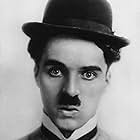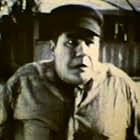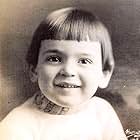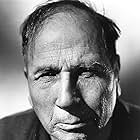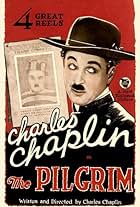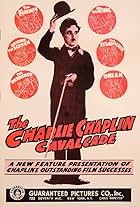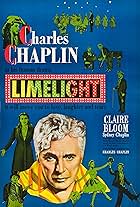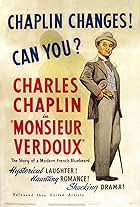IMDb RATING
7.7/10
1.7K
YOUR RATING
Three Charlie Chaplin short films edited together with new connective tissue.Three Charlie Chaplin short films edited together with new connective tissue.Three Charlie Chaplin short films edited together with new connective tissue.
Charles Chaplin
- Narrator
- (voice)
Edna Purviance
- The Girl
- (archive footage)
Albert Austin
- Crook (segment "A Dog's Life")
- (archive footage)
- …
Henry Bergman
- Dance-hall Lady (segment "A Dog's Life")
- (archive footage)
- …
Kitty Bradbury
- Girl's Mother (segment "The Pilgrim")
- (archive footage)
Syd Chaplin
- Lunchwagon Owner (segment "A Dog's Life")
- (archive footage)
- (as Sydney Chaplin)
- …
Tom Murray
- Sheriff (segment "The Pilgrim")
- (archive footage)
Charles Reisner
- Employment Agency Clerk
- (archive footage)
- (as Chuck Reisner)
- …
Dean Riesner
- Little Boy (segment "The Pilgrim")
- (archive footage)
- (as Dinky Reisner)
Mack Swain
- Large Deacon (segment "The Pilgrim")
- (archive footage)
Loyal Underwood
- Small German Officer (segment "Shoulder Arms")
- (archive footage)
- …
Mai Wells
- Little Boy's Mother (segment "The Pilgrim")
- (archive footage)
- (as ?)
Jack Wilson
- CrownMan at the Bar (segment "A Dog's Life")
- (archive footage)
- …
Tom Wilson
- Policeman (segment "A Dog's Life")
- (archive footage)
- …
Phyllis Allen
- Congregation Member (segment "The Pilgrim")
- (archive footage)
- (uncredited)
Dave Anderson
- The Bartender (segment "A Dog's Life")
- (archive footage)
- (uncredited)
Bert Appling
- Unemployed Man (segment "A Dog's Life")
- (archive footage)
- (uncredited)
Monta Bell
- Policeman (segment "The Pilgrim")
- (archive footage)
- (uncredited)
- Director
- Writer
- All cast & crew
- Production, box office & more at IMDbPro
Storyline
Did you know
- TriviaTo achieve the feel of a modern print, Charles Chaplin stretch-printed the footage, which slowed it down to sound speed so music could be added properly.
- Alternate versionsReissued in a version minus A DOG'S LIFE. Also, the A DOG'S LIFE segment was later reissued by itself. The DVD version includes extra scenes that Chaplin decided to cut on the films' re-release. It also contains the original scores as composed by Chaplin for the film. The scores were recorded in mono on the origianal soundtracks by the Westrex Recording System, but the original stereo tapes were used in the mastering of the soundtrack, recorded on Dolby Digital.
- ConnectionsEdited from A Dog's Life (1918)
Featured review
In the late 1940s there was a short film series entitled "Flicker Flashbacks," in which excerpts from silent dramas featuring the likes of Mary Pickford and Blanche Sweet were played for laughs. Scratchy clips from antiquated old movies were rearranged, projected too fast, and given an overlay of jangly music and lame quips. The attitude expressed through this brutal treatment pretty much summed up mid-century Hollywood's view of its early days: silent cinema was considered hokey, florid, a little embarrassing, and only good for a chuckle. During the 1950s this attitude gradually began to change for a number of reasons. James Agee's famous 1949 essay on the silent clowns for Life Magazine was a factor, but television played a major role in reacquainting viewers with silent movies. Admittedly, the TV networks sometimes handled the material almost as crudely as the "Flicker Flashbacks" people, but high-toned series such as "Silents, Please" treated the films with respect. Another milestone was Robert Youngson's compilation feature The Golden Age of Comedy, which proved to be something of a surprise hit when it was released to theaters late in 1957.
I don't know if Charles Chaplin was aware of Youngson's film or its success at the box office, but it was around this time that he decided to launch a theatrical re-release of three of his best short comedies, A Dog's Life, Shoulder Arms (both made in 1918), and The Pilgrim (made in 1922 and released the following year). These three movies happened to work well as a trio since they contrast nicely in plot, theme, and setting. In addition, all three offer familiar faces from Chaplin's stock company, some of whom play multiple roles in each short. At the time of the re-release the films hadn't been publicly screened in many years, so perhaps Chaplin might also have been concerned about maintaining his reputation with a new generation of movie-goers, especially since his best work was seldom shown on television in the new medium's early days.
Unfortunately, Chaplin apparently concluded that the films moved too quickly at the old silent projection speed, so he made the decision to "stretch-print" them, which meant that every other frame was printed twice. Maybe he wanted to avoid the 'Flicker Flashbacks' look, but from posterity's point of view this wasn't the best way to go about it. Aesthetically speaking, the results were awful and practically destroyed the movies' flow of action. Nonetheless, that's how The Chaplin Revue was released to theaters in 1959, and that's the version that was transferred to video and made commercially available by Playhouse Video in the 1980s. I purchased a VHS copy of the movie at the time, and was terribly disappointed with the jerky, stop-and-start rhythm of the films.
It's a relief to find that David Shepard's restoration of Chaplin's compilation (originally produced for the laser-disc format) is an improvement over the Playhouse Video version. The "stretch-printing" has been modified, though not entirely, and the action does seem to lag a bit at times. For example: in A Dog's Life during Edna and Charlie's awkward dance in the Green Lantern Café, Edna's bare arms appear visibly blurred; at another point, during the trench scene in Shoulder Arms when Charlie is relieved from sentry duty, the action appears oddly slowed-down for a few moments, although this may be the result of a maneuver by the film restorers to cover a bit of decomposition. Over all, picture quality is fantastic considering the age of the movies themselves.
Other bonuses: The Revue begins with rare behind-the-scenes footage taken at the Chaplin studio. This includes shots of an obviously staged, jokey rehearsal session where Chaplin throttles diminutive actor Loyal Underwood, as well as scenes of Charlie at his dressing table putting on his makeup and trimming the famous mustache. These scenes are accompanied by Chaplin's narration, delivered at a rapid clip. Chaplin also composed a new musical score for the compilation, and I feel his themes for The Revue rank with his best compositions, especially the pieces used during the café sequence in A Dog's Life. The one exception, in my opinion, is the song written for The Pilgrim, a pseudo Singin' Cowboy number called "Bound for Texas," sung 1950s style by Matt Monro (sounding rather like Gene Autry), which is distractingly anachronistic and out of place. Otherwise, throughout the rest of The Revue, the music is perfectly suited to the action and the atmosphere.
The Image release of The Chaplin Revue is, in a sense, its long postponed debut, presenting these classic comedies in a more watchable and enjoyable form than what audiences saw in 1959 -- though still not, it should be added, the best possible version. Here's hoping that a newly restored edition might some day present these films the way they should be seen.
I don't know if Charles Chaplin was aware of Youngson's film or its success at the box office, but it was around this time that he decided to launch a theatrical re-release of three of his best short comedies, A Dog's Life, Shoulder Arms (both made in 1918), and The Pilgrim (made in 1922 and released the following year). These three movies happened to work well as a trio since they contrast nicely in plot, theme, and setting. In addition, all three offer familiar faces from Chaplin's stock company, some of whom play multiple roles in each short. At the time of the re-release the films hadn't been publicly screened in many years, so perhaps Chaplin might also have been concerned about maintaining his reputation with a new generation of movie-goers, especially since his best work was seldom shown on television in the new medium's early days.
Unfortunately, Chaplin apparently concluded that the films moved too quickly at the old silent projection speed, so he made the decision to "stretch-print" them, which meant that every other frame was printed twice. Maybe he wanted to avoid the 'Flicker Flashbacks' look, but from posterity's point of view this wasn't the best way to go about it. Aesthetically speaking, the results were awful and practically destroyed the movies' flow of action. Nonetheless, that's how The Chaplin Revue was released to theaters in 1959, and that's the version that was transferred to video and made commercially available by Playhouse Video in the 1980s. I purchased a VHS copy of the movie at the time, and was terribly disappointed with the jerky, stop-and-start rhythm of the films.
It's a relief to find that David Shepard's restoration of Chaplin's compilation (originally produced for the laser-disc format) is an improvement over the Playhouse Video version. The "stretch-printing" has been modified, though not entirely, and the action does seem to lag a bit at times. For example: in A Dog's Life during Edna and Charlie's awkward dance in the Green Lantern Café, Edna's bare arms appear visibly blurred; at another point, during the trench scene in Shoulder Arms when Charlie is relieved from sentry duty, the action appears oddly slowed-down for a few moments, although this may be the result of a maneuver by the film restorers to cover a bit of decomposition. Over all, picture quality is fantastic considering the age of the movies themselves.
Other bonuses: The Revue begins with rare behind-the-scenes footage taken at the Chaplin studio. This includes shots of an obviously staged, jokey rehearsal session where Chaplin throttles diminutive actor Loyal Underwood, as well as scenes of Charlie at his dressing table putting on his makeup and trimming the famous mustache. These scenes are accompanied by Chaplin's narration, delivered at a rapid clip. Chaplin also composed a new musical score for the compilation, and I feel his themes for The Revue rank with his best compositions, especially the pieces used during the café sequence in A Dog's Life. The one exception, in my opinion, is the song written for The Pilgrim, a pseudo Singin' Cowboy number called "Bound for Texas," sung 1950s style by Matt Monro (sounding rather like Gene Autry), which is distractingly anachronistic and out of place. Otherwise, throughout the rest of The Revue, the music is perfectly suited to the action and the atmosphere.
The Image release of The Chaplin Revue is, in a sense, its long postponed debut, presenting these classic comedies in a more watchable and enjoyable form than what audiences saw in 1959 -- though still not, it should be added, the best possible version. Here's hoping that a newly restored edition might some day present these films the way they should be seen.
- How long is The Chaplin Revue?Powered by Alexa
Details
- Release date
- Country of origin
- Official site
- Language
- Also known as
- The Chaplin Review
- Production company
- See more company credits at IMDbPro
Box office
- Gross worldwide
- $9,249
- Runtime1 hour 59 minutes
- Color
- Aspect ratio
- 1.37 : 1
Contribute to this page
Suggest an edit or add missing content









